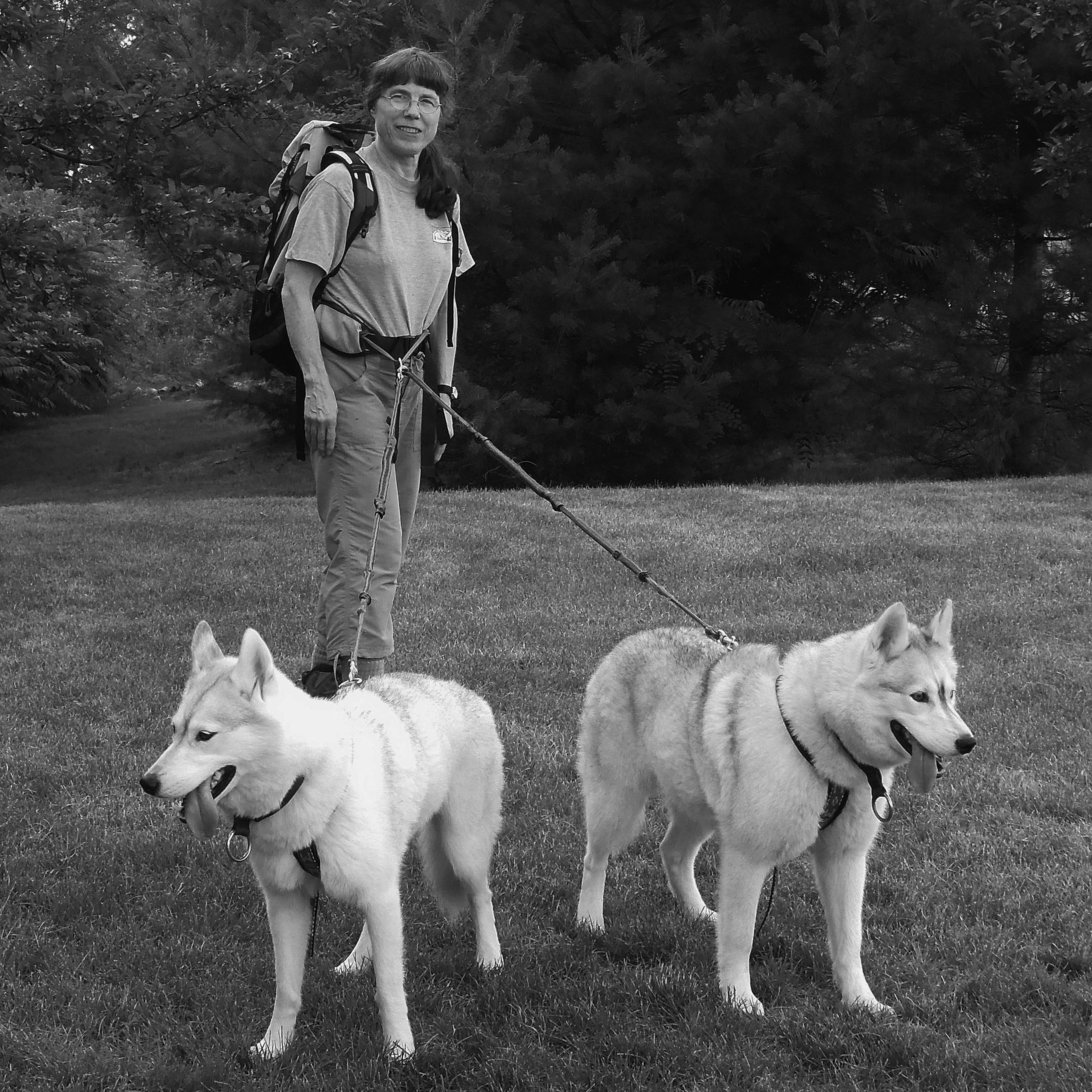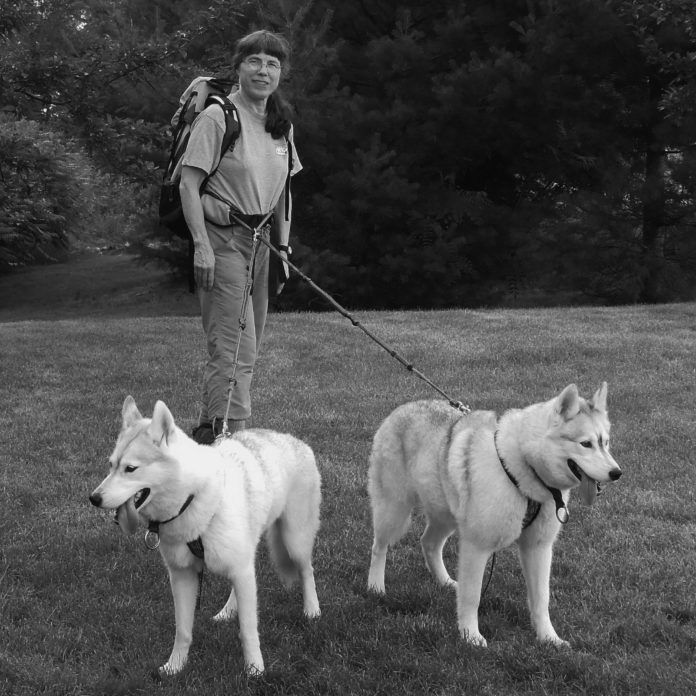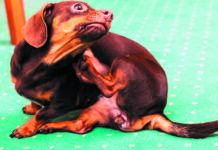Judith Reardon of Chocorua, New Hampshire, near the Maine border, was concerned. Her Siberian husky Elenna shed a great deal in early May, but Elenna’s littermate, Haleth, kept her coat through the spring. Both pets, used as sled dogs, have the same living conditions. “Can shedding or not shedding be an indicator of health issues?” Ms. Reardon asks.
“Owners are often concerned about shedding,” says Tufts veterinary dermatologist Lluis Ferrer, DVM, PhD, DECVD. “They bring it up to vets frequently.” It’s not just a health concern. It’s a neatness issue. “Shedding is reported as the biggest disadvantage of dog ownership,” Dr. Ferrer comments.


Fortunately, the problems arising from a dog’s shedding are all the owner’s, not the dog’s. “Shedding is not an indicator of health issues,” Dr. Ferrer says. “Even with a lot of shedding, if your dog retains a normal coat and you don’t see areas of hair loss that lead to bald patches, you don’t need to consult a vet.” Some mammals do go bald when they shed — certain wild rodents, for instance. But the hairs of dogs and many other mammals, including humans, grow and die at different rates. Some follicles are actively growing while others are slowing down and still others, in a phase of non-growth. The mosaic pattern is what insures that hair is on the body at all times and that baldness doesn’t occur.
The most important factor that determines how actively a dog will grow hair is the number of hours of light in the day — the photoperiod. As the hours of daylight increase, more hair follicles stop growing because they are preparing for warmer weather to come. As daylight hours decrease, many hair follicles start to grow again and the shedding declines. What that means is that dogs shed more toward the end of the cold weather and start to put on a thicker coat as the summer wears on, even though that might seem counterintuitive.
“It’s the inverse of what people think,” as Dr. Ferrer puts it. They expect dogs to lose hair in the warm weather and grow it when it’s cold, but it’s all about the season that’s coming, not the season we’re in.
Think about it. It’s in winter that the days start getting longer (the shortest day of the year is the first day of winter, with the days getting longer from there), so shedding tends to increase to lighten dogs’ load come spring. In summer, when the number of daylight hours wanes (the longest day of the year is June 21st), dogs do less shedding and retain more hair in anticipation of the colder months to come.
While the seasonal effect is real, it’s moderate, in part because today’s pet dogs live mostly indoors rather than outside in the wild. But “even in a wild dog, the effect of seasonality is not strong,” Dr. Ferrer says. Thus, “if the dog is inside most of the time, which most pets are, it’s minimal.” In fact, pet dogs might shed more than dogs in the wild because of the effect of artificial light from lamps turned on so many hours of the day.
But no matter how strong or weak the effect of light, why would two dogs of the same breed living in the same conditions shed at different rates, at different times, as Ms. Reardon’s recently have? “All the processes of shedding in a dog are not completely understood,” Dr. Ferrer says. “There are many other factors involved.” Hormone secretions play into it, as do other circulating chemicals in the body, and even a dog’s stress level. If one dog is a little more high-strung than another, her shedding pattern might be affected. “It is difficult to know the scientific answer for each particular dog,” Dr. Ferrer says, or “why one year might be different from the last. We don’t know, honestly,” but it is not something to worry over. Indeed, here in the northern hemisphere, dogs tend to shed more not only in the spring, when the number of daylight hours increase, but also in the fall, when they are decreasing and dogs should be holding onto their coats. Again, why is not readily understood.
It’s worth noting that in some dogs, dead hairs might tend to remain in their hair follicles longer before falling out. So what an owner might detect as an increase in shedding is no more than an increase in the natural falling out of hairs once they have died. It’s possible that’s the case in a pair of dogs like Ms. Reardon’s. The same amount of hair on both may have died, but it’s simply falling out faster in one of them.
Dealing with shedding’s fallout
Okay, so a dog’s shedding pattern, even if it changes from one year to the next, is not something to worry about as long as the dog isn’t developing any bald spots, which could be an indication of an endocrine (hormonal) disorder or some other disease. But what about the nuisance effect? How best to deal with hair all over the rugs, furniture, clothing?
Dr. Ferrer says that “after your resignation and acceptance that this is how dogs are made” and that life with a dog may very well include a lot of hair around the house, the single biggest impact you can make in keeping the fur from flying is through assiduous brushing. Every day, if possible, actively brush your dog to remove dead hairs and put them right in the trash. “Even vacuuming the surface of the dog is good in some cases,” Dr. Ferrer advises, conceding that while certain dogs may enjoy the sensation and not mind the noise, others will run under the couch and, if they were able, would call the authorities on you.
Diligently removing dead hair on a consistent basis “is a good way to really see if there’s a health issue if you’re worried about one,” Dr. Ferrer says. “If you remove tons of hair but the dog still has a complete coat, there’s nothing to worry about.”
If you are really bothered by dog hair around the house — and in the car, on your clothing, and everywhere else — consider getting a curly-haired breed like a poodle, Portuguese water dog, or bichon frise. Dogs with curly hair “have most hair follicles in the active growing phase” relatively speaking, Dr. Ferrer says. “They don’t keep all of their hair 100 percent of the time, but they don’t shed as much as other breeds, either. A number of people say that if you don’t want to be in constant contact with shedding hairs, you will find the curly-coated breeds most adequate to your taste.”
On the other hand, dogs with two coats — a top coat and an undercoat (think German shepherds and the like) — may appear to be among the biggest shedding offenders because they essentially have two types of hair and therefore more hair in different phases of growth at different times.
Of course, Dr. Ferrer says, it’s important to remain aware that everything that can be said about which dogs shed more and which, less, are generalities. “There’s a lot of variability. We have a reasonable overall assessment for something like 400 breeds of dogs, which is probably not accurate for any single one of them.” Better from the get-go to simply assume that life with a dog is going to mean life with hair. Unlike for you, dead hairs are not going to go down the drain each day, unnoticed, in the shower.





